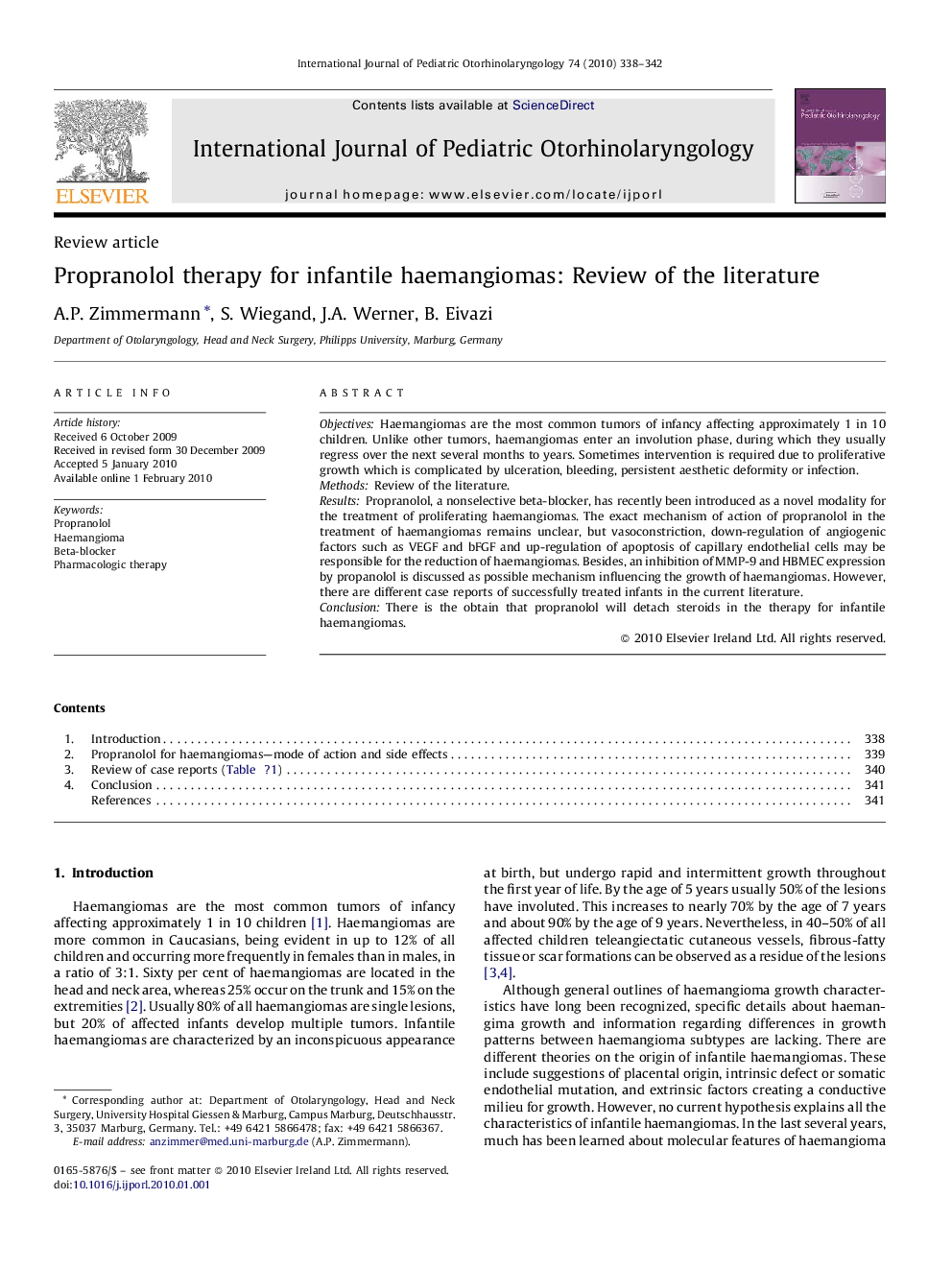| Article ID | Journal | Published Year | Pages | File Type |
|---|---|---|---|---|
| 4114585 | International Journal of Pediatric Otorhinolaryngology | 2010 | 5 Pages |
ObjectivesHaemangiomas are the most common tumors of infancy affecting approximately 1 in 10 children. Unlike other tumors, haemangiomas enter an involution phase, during which they usually regress over the next several months to years. Sometimes intervention is required due to proliferative growth which is complicated by ulceration, bleeding, persistent aesthetic deformity or infection.MethodsReview of the literature.ResultsPropranolol, a nonselective beta-blocker, has recently been introduced as a novel modality for the treatment of proliferating haemangiomas. The exact mechanism of action of propranolol in the treatment of haemangiomas remains unclear, but vasoconstriction, down-regulation of angiogenic factors such as VEGF and bFGF and up-regulation of apoptosis of capillary endothelial cells may be responsible for the reduction of haemangiomas. Besides, an inhibition of MMP-9 and HBMEC expression by propanolol is discussed as possible mechanism influencing the growth of haemangiomas. However, there are different case reports of successfully treated infants in the current literature.ConclusionThere is the obtain that propranolol will detach steroids in the therapy for infantile haemangiomas.
